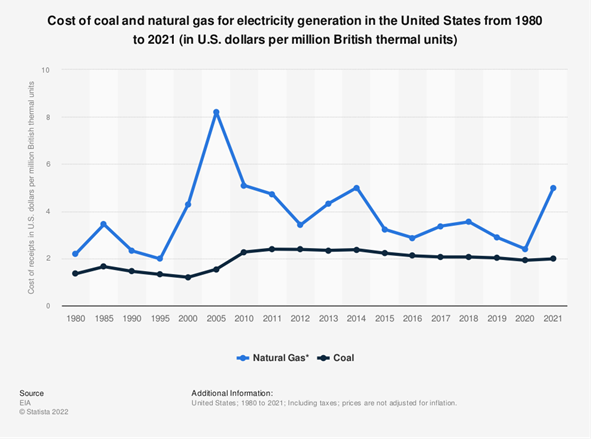Carbon Capture
Carbon dioxide (CO2) emissions from coal-fired power plants and other industrial facilities need to be reduced to meet climate goals. Coal emissions contain much more CO2 (2.26 pounds per kWh) compared to natural gas (0.97 pounds per kWh).
The U.S. and Illinois still have many coal-fired power plants. Illinois ranked seventh in the country in electricity generated from burning coal in 2021. Coal remains an attractive low-cost option for power plants when compared to natural gas and other fossil fuels. For the past five years, coal has produced a larger percentage of electricity in Illinois than every other energy source besides nuclear power. Coal also remains the best option for baseload energy generation, the minimum energy needs of a given area. The ability to store coal safely and for long periods of time on-site at power plants make it the most reliable option during extreme weather events, or when there are interruptions to other energy sources (Bisercic and Bugaric, 2021).
Current carbon capture technologies are energy intensive and nearly double the cost of generating electricity. Federal legislation (Inflation Reduction Act, Bipartisan Infrastructure Law) passed in the last few years is designed to provide funds for pipelines, underground storage, and more carbon capture facilities. There have been tax incentives in place that pay companies $50 per ton of CO2 captured, but the new law will raise that bounty to $85 per ton. This incentivizes companies to capture carbon from sources (natural gas processing and cement plants) with lower CO2 concentrations.
Eventually coal will be phased out in favor of cleaner fuels and renewable energy, but until then, it is important to keep the available fossil fuels as emission-free as possible. To help the U.S. meet its climate goals, ISTC and its sister survey the Illinois State Geological Survey, both a part of the Prairie Research Institute, are investigating carbon capture methods at not only the lab scale but also at large pilot scale.

View source figure on Statista.